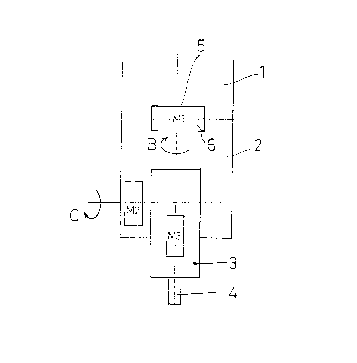Une partie des informations de ce site Web a été fournie par des sources externes. Le gouvernement du Canada n'assume aucune responsabilité concernant la précision, l'actualité ou la fiabilité des informations fournies par les sources externes. Les utilisateurs qui désirent employer cette information devraient consulter directement la source des informations. Le contenu fourni par les sources externes n'est pas assujetti aux exigences sur les langues officielles, la protection des renseignements personnels et l'accessibilité.
L'apparition de différences dans le texte et l'image des Revendications et de l'Abrégé dépend du moment auquel le document est publié. Les textes des Revendications et de l'Abrégé sont affichés :
| (12) Demande de brevet: | (11) CA 2268202 |
|---|---|
| (54) Titre français: | TETE DE COUPE DE FRAISEUSE A DEUX ELEMENTS DE ROTATION CONTINUE ET A ENTRAINEMENT DIRECT |
| (54) Titre anglais: | MILLER CUTTERHEAD WITH TWO CONTINUOUS ROTATIONS AND DIRECT DRIVE |
| Statut: | Réputée abandonnée et au-delà du délai pour le rétablissement - en attente de la réponse à l’avis de communication rejetée |
| (51) Classification internationale des brevets (CIB): |
|
|---|---|
| (72) Inventeurs : |
|
| (73) Titulaires : |
|
| (71) Demandeurs : |
|
| (74) Agent: | SWABEY OGILVY RENAULT |
| (74) Co-agent: | |
| (45) Délivré: | |
| (22) Date de dépôt: | 1999-04-07 |
| (41) Mise à la disponibilité du public: | 2000-10-07 |
| Licence disponible: | S.O. |
| Cédé au domaine public: | S.O. |
| (25) Langue des documents déposés: | Anglais |
| Traité de coopération en matière de brevets (PCT): | Non |
|---|
| (30) Données de priorité de la demande: | S.O. |
|---|
Miller cutterhead with two continuous rotations and direct drive, of the kind
that is comprised of slide, cutterhead and main spindle, where: a)-. the
cutterhead is a modular element and has a first and second supplementary
rotation spindle, to convert a three-spindle grinding centre or milling
machine into a five spindle one; b)-. it has a first motor coupled directly
onto the first supplementary rotation spindle with the stator fixed on the
slide and with its motor fixed on the cutterhead; and c)-. it has a second
motor coupled directly onto the second rotation spindle. The first and second
motors are high torque flat motors with a low speed range; in particular
direct servomotors, without any intermediate transmission or reduction.
Application in machine-tool.
Note : Les revendications sont présentées dans la langue officielle dans laquelle elles ont été soumises.
Note : Les descriptions sont présentées dans la langue officielle dans laquelle elles ont été soumises.

2024-08-01 : Dans le cadre de la transition vers les Brevets de nouvelle génération (BNG), la base de données sur les brevets canadiens (BDBC) contient désormais un Historique d'événement plus détaillé, qui reproduit le Journal des événements de notre nouvelle solution interne.
Veuillez noter que les événements débutant par « Inactive : » se réfèrent à des événements qui ne sont plus utilisés dans notre nouvelle solution interne.
Pour une meilleure compréhension de l'état de la demande ou brevet qui figure sur cette page, la rubrique Mise en garde , et les descriptions de Brevet , Historique d'événement , Taxes périodiques et Historique des paiements devraient être consultées.
| Description | Date |
|---|---|
| Inactive : CIB de MCD | 2006-03-12 |
| Inactive : CIB de MCD | 2006-03-12 |
| Demande non rétablie avant l'échéance | 2002-04-08 |
| Le délai pour l'annulation est expiré | 2002-04-08 |
| Réputée abandonnée - omission de répondre à un avis sur les taxes pour le maintien en état | 2001-04-09 |
| Demande publiée (accessible au public) | 2000-10-07 |
| Inactive : Page couverture publiée | 2000-10-06 |
| Inactive : CIB en 1re position | 1999-05-26 |
| Lettre envoyée | 1999-05-11 |
| Inactive : Certificat de dépôt - Sans RE (Anglais) | 1999-05-11 |
| Demande reçue - nationale ordinaire | 1999-05-07 |
| Date d'abandonnement | Raison | Date de rétablissement |
|---|---|---|
| 2001-04-09 |
| Type de taxes | Anniversaire | Échéance | Date payée |
|---|---|---|---|
| Enregistrement d'un document | 1999-04-07 | ||
| Taxe pour le dépôt - générale | 1999-04-07 |
Les titulaires actuels et antérieures au dossier sont affichés en ordre alphabétique.
| Titulaires actuels au dossier |
|---|
| INDUSTRIAS ANAYAK, S.A. |
| Titulaires antérieures au dossier |
|---|
| JOSE IGNACIO SAEZ MARTINEZ |